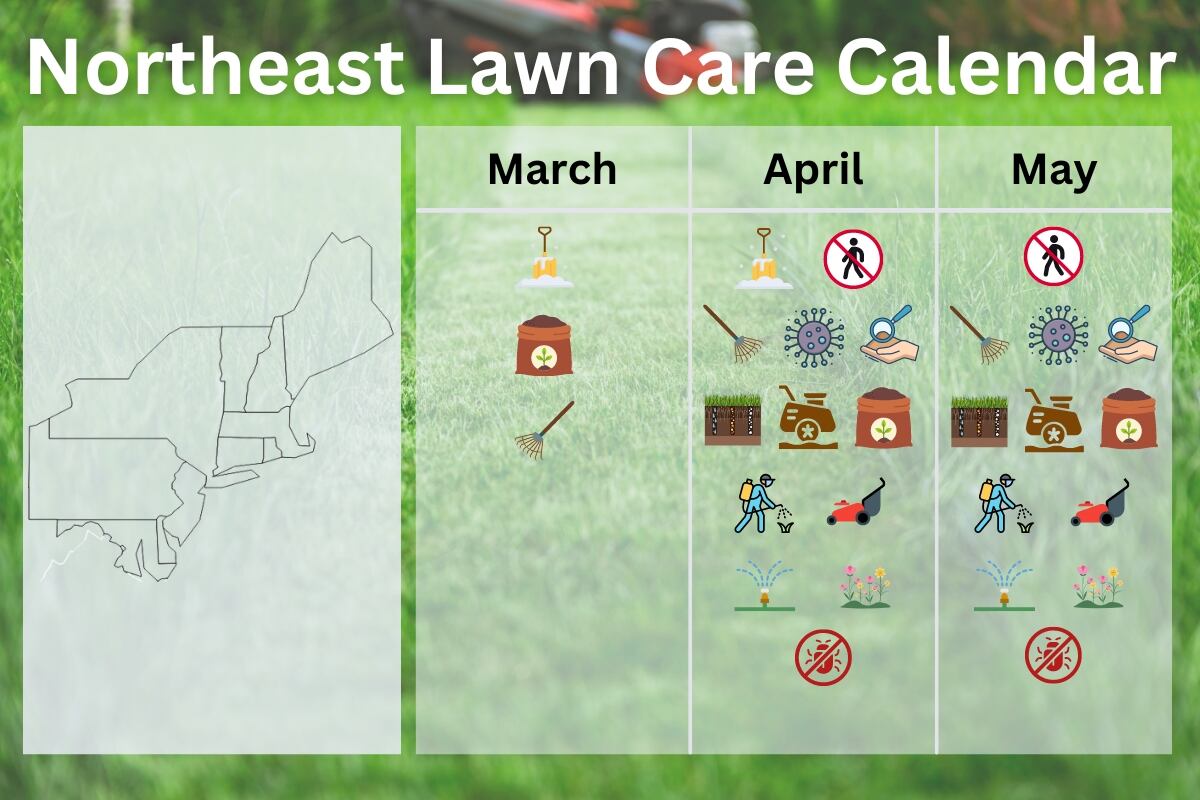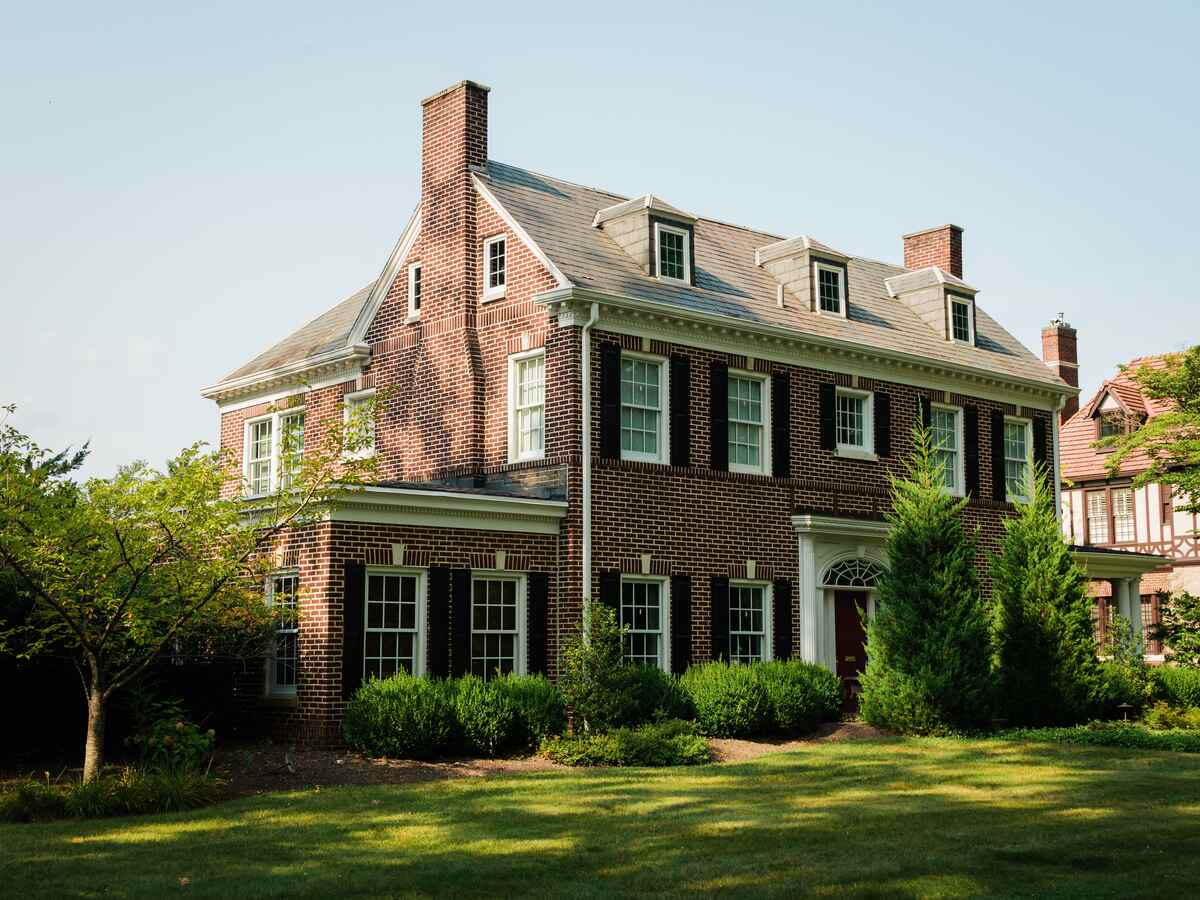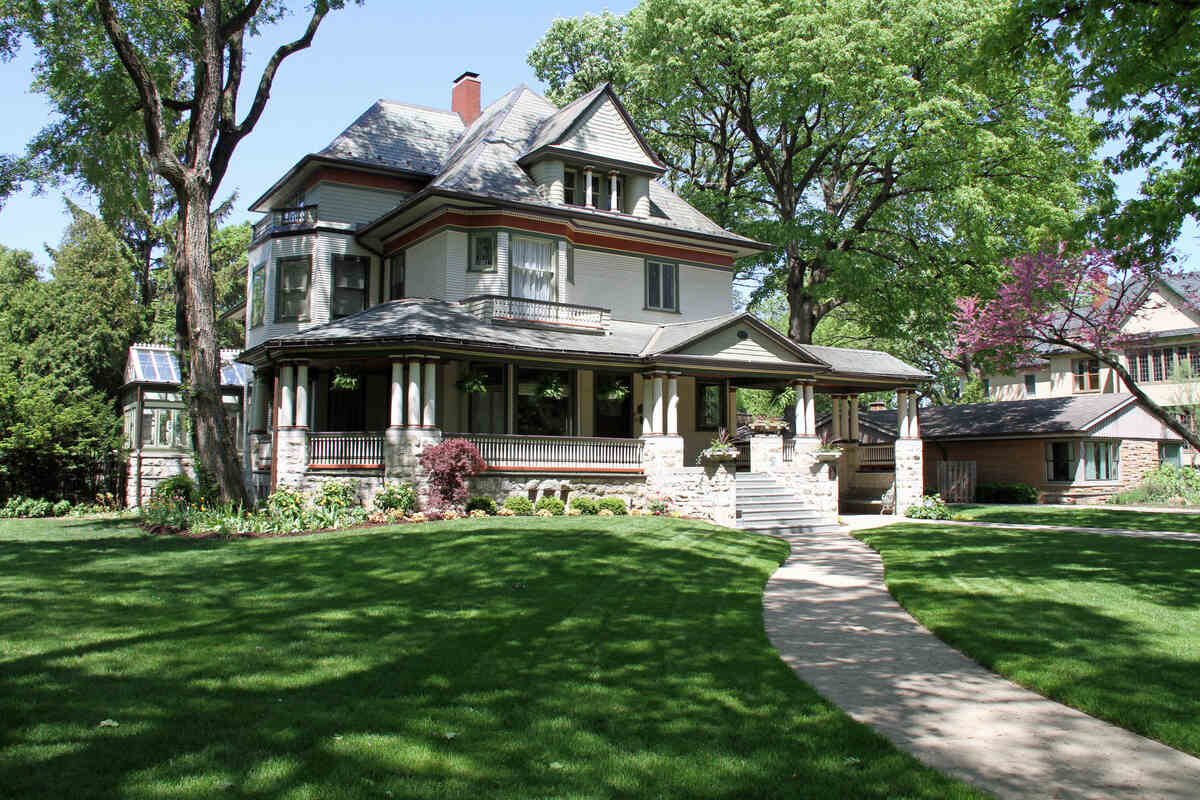
Lawn care in Wyoming depends on one thing: location. The Continental Divide splits the state, so the west gets more precipitation while the east is semi-arid. Use our guide on the best grass seed for Wyoming to find types of grass that can hold up to anything the state’s weather can throw at it.
Skip ahead to our section on choosing the best grass type for your Wyoming lawn if you’re short on time.
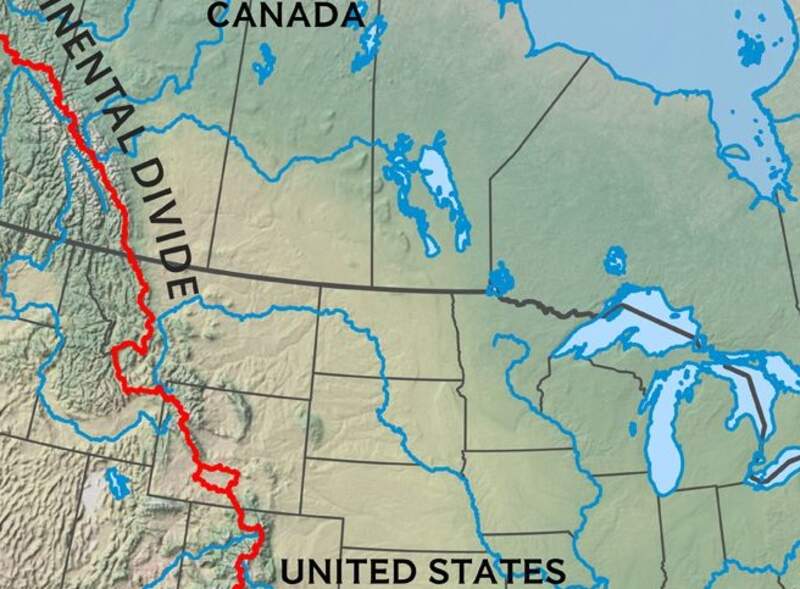
Cool-Season Grasses
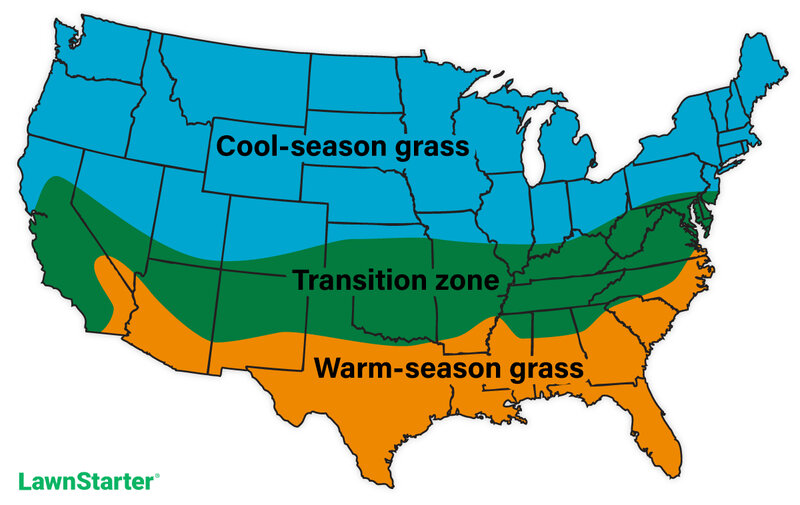
Kentucky Bluegrass
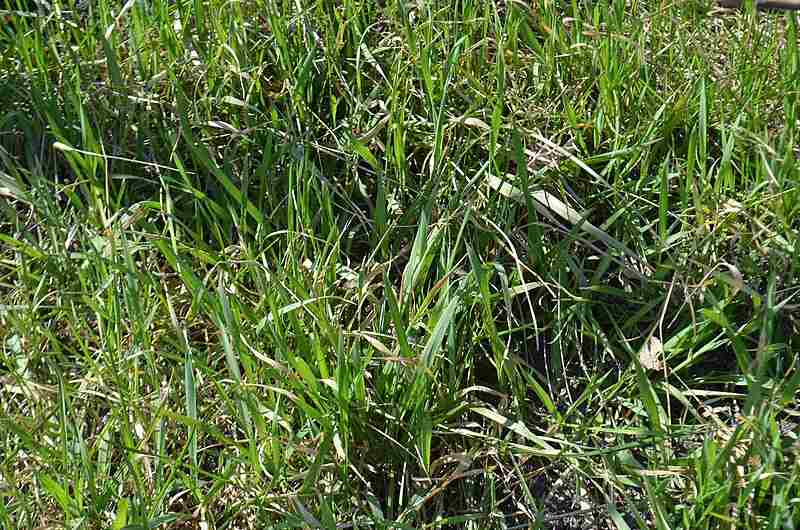
Photo Credit: Ethan2039 / Wikimedia Commons / CC BY-SA 4.0
Wyoming’s cooler night temperatures suit this popular turfgrass across the state. Kentucky bluegrass likes full sun, is very cold tolerant, and will hold up to kids and pets romping in the yard. If you live in eastern Wyoming, be aware that some Kentucky bluegrass cultivars need more fertilizer and water than others.
Classification: Cool-season grass
Spreads by: Rhizomes
Shade tolerance: Low
Drought tolerance: Moderate
Foot traffic tolerance: Moderate
Maintenance needs: Moderate mowing frequency and high fertilization needs.
Mowing height: Set mowing height between 2.5 and 3 inches.
Potential for disease: Moderate to high; prone to several diseases, such as dollar spot, leaf spot, necrotic ring spot, summer patch, and stripe smut.
Soil pH: 6-7.5
Soil type: Performs best in well-drained, heavy soils with high fertility.
Other notes: For a more water-thrifty Kentucky bluegrass, consider Park, North Dakota Common, and Kenblue varieties.
Grass Seed Options:
– Jonathan Green (11970) Blue Panther Kentucky Bluegrass Grass Seed (3 lbs.)
– SeedRanch Midnight Kentucky Bluegrass Seed (5 lbs.)
Fine Fescues

Aaron J. Patton, Ph.D. / Turfgrass Extension Specialist at Purdue University
Fine fescue is a good drought-tolerant grass for eastern Wyoming. It’s also a good choice for a low-maintenance yard wherever you live. However, the fine fescues don’t stand up to foot traffic, so they aren’t a good choice if your lawn gets heavy use.
Fine fescue lawns can be manicured (mowed regularly) or left to grow long and create a meadow-like lawn that is mowed one to two times per year. Manicured fine fescue lawns need from 0.5 to 1 inch of water each week, but meadow-like lawns need as little as 1 inch of water each month.
Classification: Cool-season grass
Spreads by: Creeping red fescue spreads by rhizomes, while other fine fescues are bunch-type grasses, such as Chewings, hard, and sheep fescues.
Shade tolerance: Moderate to High, depending on species
Drought tolerance: Moderate to High, depending on species
Foot traffic tolerance: Low to Moderate, depending on species
Maintenance needs: Low fertilizer and mowing needs
Mowing height: Set mowing height between 2.5 and 3 inches, depending on grass species.
Potential for disease: Moderate. Common diseases include red thread, leaf spot, dollar spot, summer patch, and powdery mildew.
Soil pH: 6-6.5
Soil type: Will not perform well in wet soil conditions. Prefers drier soils and tolerates a wide range of soil types and fertility.
Other notes: Fine fescue grasses can grow in full sun in Wyoming. If you’re selecting turfgrass for a shaded lawn, consider creeping red, slender red, hard, Chewings, or sheep fescue.
Grass Seed Options:
– Outsidepride Legacy Fine Fescue Grass Seed (5 lbs.)
– Eretz Creeping Red Fine Fescue Seed (choose your size)
– Outsidepride Creeping Red Fine Fescue Grass Seed (25 lbs.)
– Outsidepride Hard Fine Fescue Grass Seed (10 lbs.)
Tall Fescue
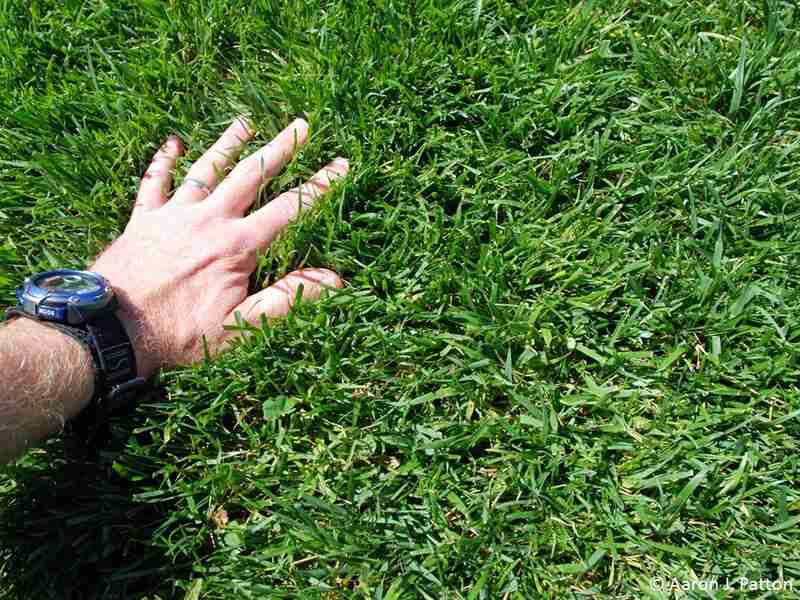
Aaron J. Patton, Ph.D. / Turfgrass Extension Specialist at Purdue University
This bunchgrass produces a mostly low-maintenance lawn that stands up to moderate foot traffic. Turf-type tall fescue’s strong, deep root system makes it heat and drought-tolerant, and thus a good choice for the semi-arid portions of the state.
If you’re concerned about growing grass in the shade, tall fescue may be a good fit, as it will grow under partial shade conditions. However, if it thins out due to excessive shade or foot traffic, plan to get out the spreader to overseed each fall. Tall fescue is a bunch-type grass and won’t repair on its own.
Classification: Cool-season grass
Spreads by: Produces short rhizomes but has a bunch-type growth habit
Shade tolerance: Moderate
Drought tolerance: Moderate to High
Foot traffic tolerance: Moderate
Maintenance needs: Frequent mowing. Does not produce significant thatch.
Mowing height: Set mowing height to 2.5 to 3 inches.
Potential for disease: Tolerant of most diseases when properly maintained.
Soil pH: 5.5-6.5
Soil type: Adapted to a wide range of soil conditions, but prefers fertile clay soils with good drainage.
Other notes: Don’t mix tall fescues with other turfgrasses. If you’re putting in a new lawn, you can buy seed mixtures of several different tall fescue cultivars.
Grass Seed Options:
– Triple-Play Tall Fescue Grass Seed Blend (5000 sq ft)
– Eretz Kentucky 31 K31 Tall Fescue Grass Seed (choose your size)
– Pennington The Rebels Tall Fescue Grass Seed Mix (7 lb.)
Perennial Ryegrass
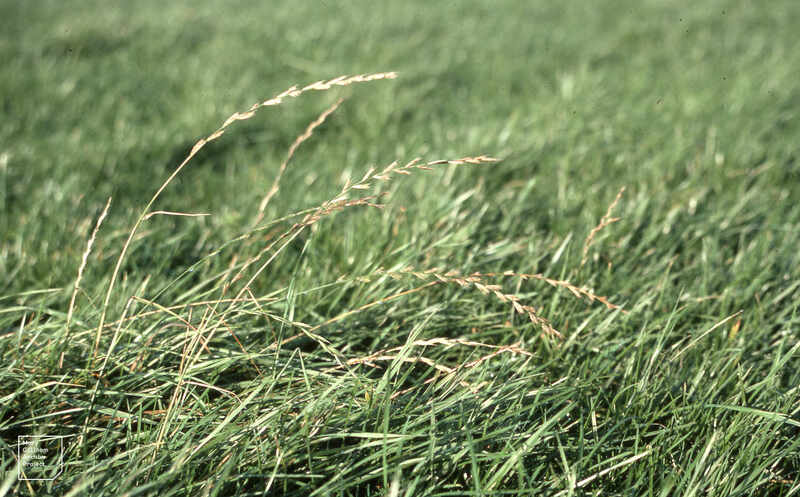
Photo Credit: Dr Mary Gillham Archive Project / Flickr / CC BY 2.0
This bunchgrass is usually found in a seed mix with Kentucky bluegrass. It germinates and greens up quickly to give your lawn a head start. It’s also used on sloping areas to prevent erosion. Ryegrass stands up to foot traffic but doesn’t care for shady areas. It also doesn’t do well with the cold, especially in windy conditions.
Classification: Cool-season grass
Spreads by: Has a bunch-type growth habit
Shade tolerance: Low
Drought tolerance: Low
Foot traffic tolerance: High
Maintenance needs: Moderate mowing and fertilization requirements. Thatch is not significant.
Mowing height: Set mowing height to 1.5 to 2.5 inches
Potential for disease: High. Common diseases include gray leaf spot, red thread, and leaf spot/melting-out.
Soil pH: Can grow in soils with a pH between 5 and 8, but prefers between 6 and 7.
Soil type: Prefers good drainage and fertility, but can tolerate some poor drainage.
Other notes: Generally, perennial ryegrass isn’t very drought tolerant. But University of Wyoming research has found that perennial ryegrass can do well in dryland as a low-maintenance grass.
Grass Seed Options:
– Outsidepride Perennial Ryegrass Seed (5 lbs.)
– Eretz ProTurf Perennial Ryegrass Fine Lawn Seed (choose your size)
Warm-Season Grasses
Buffalograss
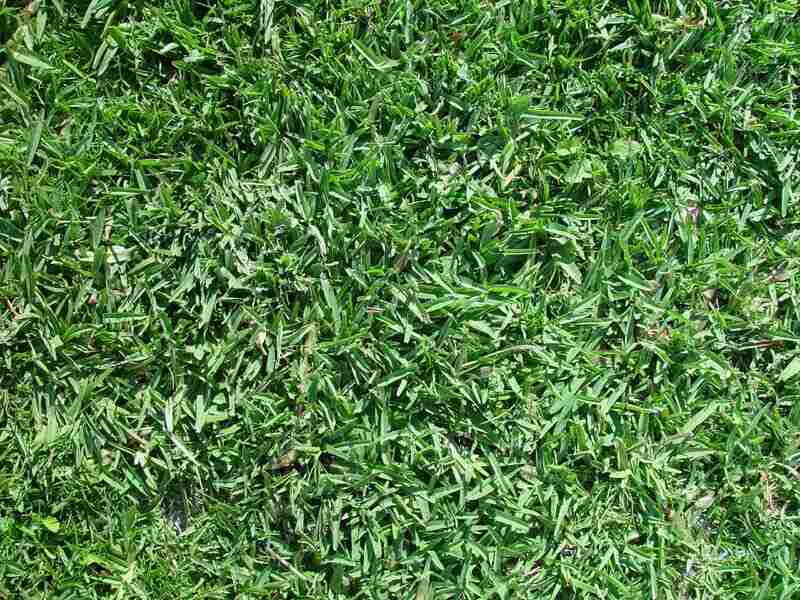
Photo Credit: Pixnio
This warm-season grass, a native of the Great Plains, is a good choice for the state’s dryland areas as it needs little water and likes heat — it’s happiest at lower elevations with hot temperatures. It also has a high cold tolerance and doesn’t need frequent mowing. However, it doesn’t tolerate shade or high foot traffic.
Classification: Warm-season grass
Spreads by: Stolons
Shade tolerance: Low
Drought tolerance: High
Foot traffic tolerance: Low
Maintenance needs: Low fertilizer and mowing needs. Requires weed control.
Mowing height: Set the mowing height at 2.5 to 2 inches.
Potential for disease: Good tolerance against diseases and insects
Soil pH: 6.5-7.5
Soil type: Native clay soils, not sandy soils
Other notes: Compared with other turf in Wyoming, buffalograss has a long dormancy period. It browns out at first frost and won’t green up until June, at the earliest.
Grass Seed Options:
– Everwilde Farms Buffalograss Seeds (1 lb. of seeds)
– Buffalograss seed (primed) (5-lb. bag)
Blue Grama
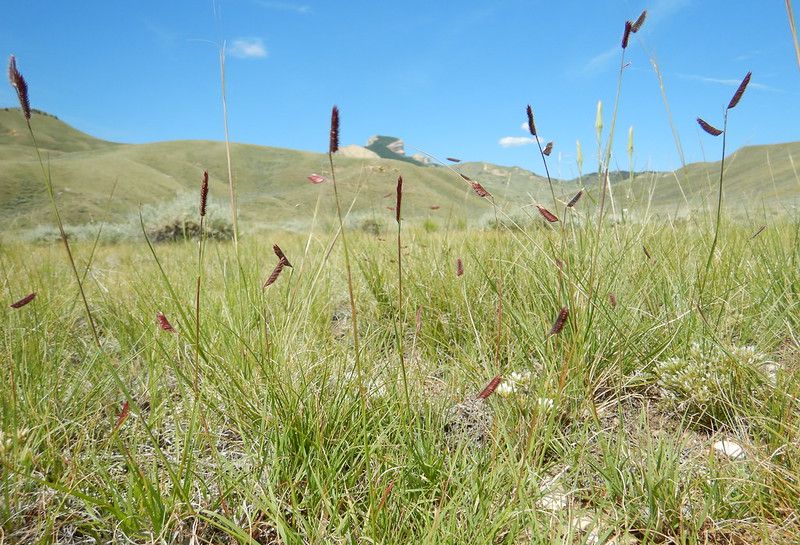
Photo credit: Matt Lavin / Flickr / CC BY-SA 2.0
Blue grama is another warm-season native grass of the Great Plains. It is slow-growing, but once established, it is very drought-resistant and heat tolerant, making it a good choice for dryland areas. It’s also cold-tolerant and doesn’t need to be mowed often. However, it doesn’t do well with heavy foot traffic or shade.
Classification: Warm-season
Spreads by: Rhizomes
Shade Tolerance: Low
Drought Tolerance: High
Foot Traffic Tolerance: Low
Maintenance Needs: Low maintenance requirements
Mowing Height: Set mowing height at 2.5 to 3 inches.
Potential for Disease: Low to Moderate. Its most prevalent disease is fungal rust.
Soil pH: 6.6-8.4
Soil Type: Tolerates a wide range of soil textures, including clays and sandy or gravelly loams. Does not perform well in wet, poorly drained soils.
Other notes: For lawns, blue grama is usually mixed with buffalograss. Both have a long dormancy season and will go brown at first frost.
Grass Seed Options:
– Everwilde Farms Blue Grama Grass Seeds (1 lb.)
– Nature’s Seed Blue Grama Grass Seeds (1 lb.)
Choosing the Best Grass Type for Your Wyoming Lawn
So, what’s the best grass for the place you call home? Where you live in Wyoming makes a difference, as does the way you use your lawn. Ask yourself a few questions, then compare your answers to these lawn characteristics.
Best Grass Types for Western Wyoming
- Kentucky bluegrass
- Fine fescues (Usually blended with Kentucky bluegrass, but a mix of the varieties can stand alone for a low-maintenance lawn.)
- Perennial Ryegrass (Usually mixed with Kentucky bluegrass)
Best Grass Types for Eastern Wyoming
- Kentucky bluegrass (Park, North Dakota Common, or Kenblue varieties.)
- Fine fescues
- Tall Fescues
- Buffalograss
- Blue grama
High-, Moderate-, or Low-Maintenance Grasses
Do you enjoy spending weekends and evenings on lawn-care chores? Then consider a high- or moderate-maintenance grass. Prefer to do other things during the spring and summer? Go with low-maintenance grass.
Moderate-maintenance grasses: Perennial ryegrass and Kentucky bluegrass, though bluegrass needs more fertilizing.
Low-maintenance grasses: Fine fescues, blue grama, and buffalograss, though the latter needs more fertilizer. If you’re really mowing-adverse, be aware: Tall fescues need less fertilizer and water but more frequent mowing.
Drought Tolerance
Wyoming, with its semi-arid areas, is the 5th driest state in the U.S. If you live in areas that are low on rainfall, plant grass seed from a variety that can thrive with less water. Check the U.S. Drought Monitor for current drought conditions in your area.
High drought tolerance: Fine and tall fescues, depending on the cultivar; buffalograss, blue grama.
Moderate drought tolerance: Kentucky bluegrass (some cultivars are more water-thrifty than others) and fine and tall fescues, depending on the cultivar.
Low drought tolerance: Perennial ryegrass.
Traffic Tolerance
How much time do you spend on your lawn? Do you have family badminton or soccer games? Do you set up chairs to enjoy the evening in the backyard? Then consider grass with high or moderate traffic tolerance. Or are the kids grown, and you prefer to spend evenings on the deck? Go for grass with low traffic tolerance.
High traffic tolerance: Perennial ryegrass.
Moderate traffic tolerance: Kentucky bluegrass, tall fescue, and fine fescues, depending on the variety.
Low traffic tolerance: Fine fescues, depending on the variety; buffalograss, and blue grama.
When to Call in a Professional
Looking for a Wyoming lawn care service near you? We have trusted lawn care pros in cities across the Cowboy State. Your lawn-care pro can help you find the best grass for your Wyoming lawn and keep it healthy all year round.
Additional resources:
University of Wyoming Data System & Climate Office
Main Image Credit: Drmccreedy / Wikimedia Commons / CC BY-SA 4.0
LawnStarter participates in the Amazon Services LLC Associates Program, an affiliate advertising program. LawnStarter may earn revenue from products promoted in this article.
